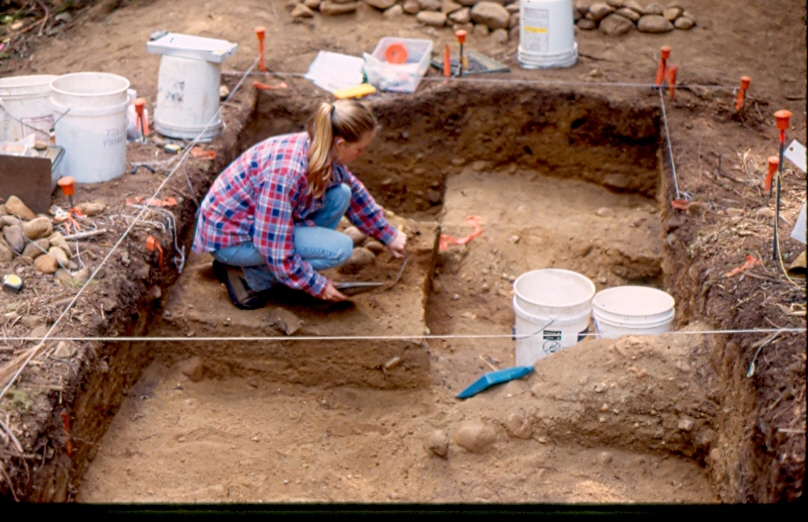2010 PUBLIC ARCHAEOLOGY FIELD SCHOOL
Feb 22, 2010
 Portland State University, Washington State University Vancouver, the National Park Service, Northwest Cultural Resources Institute, and the Fort Vancouver National Trust are pleased to announce a field school in historical archaeology at Fort Vancouver National Historic Site and Lava Beds National Monument. The program will introduce the methods and theories of fieldwork in historical archaeology. Students will participate in all aspects of field and laboratory work: laying out units, excavation by shovel and trowel, mapping, drawing, photography, and cleaning, identifying, and analyzing artifacts. The season will also include lectures by guest speakers and staff. The National Park Service and its partners are committed to sharing cultural resources and preservation values with the public. On a rotating basis, students will discuss the field school activities with visitors, interpreting the significance of the site and the educational purposes of the project. Students searching for evidence of Hudson's Bay Company workers' homes. Students will learn survey, excavation, and field laboratory skills. Fort Vancouver National Historic Site is an unparalleled archaeological laboratory, comprising the remains of Fort Vancouver, the ca.1825-1860 regional headquarters and supply depot for the Hudson’s Bay Company, and Vancouver Barracks, the first (ca. 1849-2010) permanent U.S. Army post and command center in the Pacific Northwest. This year’s field school will explore Fort Vancouver’s multicultural Village (also known as “Kanaka Village”). This colonial village was the largest settlement in the Pacific Northwest in the 1830s and 1840s. It contained people from all over the world and the Pacific Northwest, including Native Hawaiians, African Americans, the Métis, and people of many different American Indian tribes. The field school will provide a means to recapture the history of this multicultural worker’s village and to engage the modern Portland/Vancouver area in the unique history of their closest National Park site. In the latter portion of the course, the school will move to Lava Beds National Monument to assist in the NPS survey of Modoc Indian War fortifications at Captain Jack’s Stronghold in northern California. This 1872-1873 war was the longest and most expensive nineteenth century military conflict in California. Field trips may be taken to other sites in Oregon or Washington. For more information and a link to the application, check here.
Portland State University, Washington State University Vancouver, the National Park Service, Northwest Cultural Resources Institute, and the Fort Vancouver National Trust are pleased to announce a field school in historical archaeology at Fort Vancouver National Historic Site and Lava Beds National Monument. The program will introduce the methods and theories of fieldwork in historical archaeology. Students will participate in all aspects of field and laboratory work: laying out units, excavation by shovel and trowel, mapping, drawing, photography, and cleaning, identifying, and analyzing artifacts. The season will also include lectures by guest speakers and staff. The National Park Service and its partners are committed to sharing cultural resources and preservation values with the public. On a rotating basis, students will discuss the field school activities with visitors, interpreting the significance of the site and the educational purposes of the project. Students searching for evidence of Hudson's Bay Company workers' homes. Students will learn survey, excavation, and field laboratory skills. Fort Vancouver National Historic Site is an unparalleled archaeological laboratory, comprising the remains of Fort Vancouver, the ca.1825-1860 regional headquarters and supply depot for the Hudson’s Bay Company, and Vancouver Barracks, the first (ca. 1849-2010) permanent U.S. Army post and command center in the Pacific Northwest. This year’s field school will explore Fort Vancouver’s multicultural Village (also known as “Kanaka Village”). This colonial village was the largest settlement in the Pacific Northwest in the 1830s and 1840s. It contained people from all over the world and the Pacific Northwest, including Native Hawaiians, African Americans, the Métis, and people of many different American Indian tribes. The field school will provide a means to recapture the history of this multicultural worker’s village and to engage the modern Portland/Vancouver area in the unique history of their closest National Park site. In the latter portion of the course, the school will move to Lava Beds National Monument to assist in the NPS survey of Modoc Indian War fortifications at Captain Jack’s Stronghold in northern California. This 1872-1873 war was the longest and most expensive nineteenth century military conflict in California. Field trips may be taken to other sites in Oregon or Washington. For more information and a link to the application, check here.



